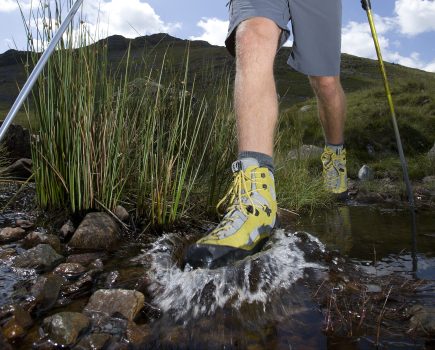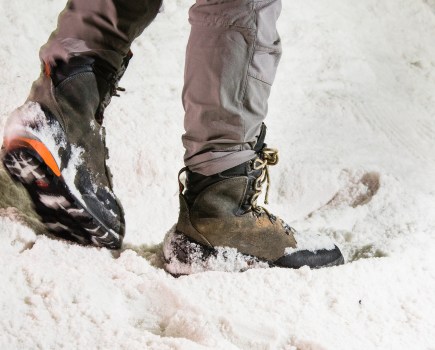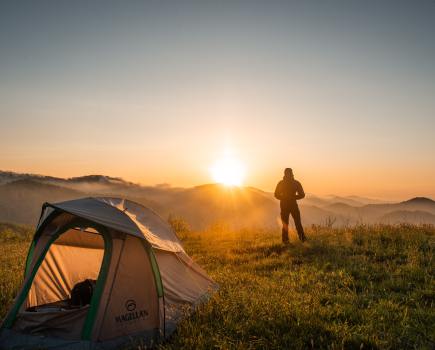If you’re new to scrambling, you’ll want to be prepared from head to toe for the spicier side of hillwalking. But should that include investing in gloves?
Scrambling is among of the most enjoyable mountain activities, combining the freedom of hiking with the adrenaline rush and intricacy of climbing.
Of course, being prepared for scrambling begins with a solid understanding of safety, mobility, and even ropework abilities (at the higher grades) as you carry your body up gullies, along knife-edge ridges, and down rock faces where every hold actually matters. It’s also critical to back up your expertise with reliable equipment. But should that include scrambling gloves? Let’s look into it.
Words: Francesca Donovan | Main image: a scrambler on Aonach Eagach. Credit: Dougie Cunningham
In an ideal world, your every scramble will take place in still, dry conditions when the rock is neither slippery nor wet and your extremities can remain warm enough without the need for gloves. Indeed, your bare hands offer the best grip and dexterity. But, it’s not always wise to scramble without gloves in the UK mountains, especially in certain circumstances.
So, there are really three main considerations at play when deciding if you need gloves for scrambling.
Firstly, what mountain weather conditions are you facing? If you’re planning a winter scramble, you’ll need to keep your hands warm enough so they can function effectively and grasp onto rock. Numb fingers – or worse – are certainly not going to serve you well on a scramble. (With that said, you should always remember to take layers with you into the hills anyway, and this includes a pair of gloves, as conditions can change quickly.)
Harder scrambling in full winter conditions is closer to winter climbing than hillwalking and you may be using ice tools rather than your hands, for which you’ll need a good pair of winter mountaineering gloves with dexterity enough to use your axe/s.
Secondly, you’ll also need to factor in your ability to grip and your dexterity when considering gloves for scrambling. This consideration can potentially come into conflict with the first – typically, the warmer gloves are, the bulkier they get. But full use of your hands is vital to tackle even a simple grade 1 scramble, so a pair of gloves can’t so bulky that they limit your hand movement too much. A compromise has to be struck between warmth and dexterity.

Two walkers tackling Càrn Mòr Dearg Arête, Ben Nevis.
Credit: Dougie Cunnigham
Thirdly, what kind of scramble are you attempting? A simple, dry and unexposed grade 1 or 2 scramble on a mild day is best tackled gloveless for full dexterity and grip. With that said, an exposed ridge – which might only be classed as an easy grade 1 scramble – could be vulnerable to wind chill that might make it feel colder than forecast, so gloves could be useful to keep you warm and moving effectively.
So, what are the best gloves for scrambling?
As discussed, selecting a good pair of gloves that you can safely use for scrambling is a bit of a balancing act – much like scrambling itself – between warmth, grip, durability, breathability and cost.
In warm or mild conditions, some opt for fingerless gloves, which generally provide good protection of the palms while leaving your fingers free and dexterous to grip rock. Those with a focus on time on rock rather might invest in crag gloves. For long days of summer scrambling, others prefer to opt for a lightweight and less durable sun glove, primarily for UV protection and to keep the skin of your hands free from scratches and tears.
These lightweight options may well not be sufficient to keep your hands warm in winter conditions, however. For this, you are likely to need something more robust, like an alpine-style gauntlet or even mitts. Some models of this style of glove might be too bulky to safely scramble in, but others will be more dextrous and will work for scrambling.
Some trial and error is likely to be involved to find the best solution for you. When it comes to warmth, individuals vary in terms of their circulation and tolerance for the cold. Just make sure your quest for warmth doesn’t hamper your dexterity to dangerous levels. If in doubt, check out our gear testers’ top 10 picks of the best hiking gloves for full reviews.








